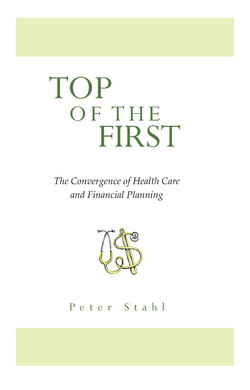Читать книгу Top of the First 2016 - Peter Stahl - Страница 6
ОглавлениеThere are 10 standardized Medigap plans from which to choose (labeled A, B, C, D, F, G, K, L, M, N). Since these policies are regulated at the state and federal level, each insurance company offers the same basic benefits. For example, each insurance company that offers a Medigap “F” plan must provide coverage for a list of items determined by the regulators. Massachusetts, Minnesota, and Wisconsin have their own standardized Medigap policies. It is important to recognize that the added coverage provided by a Medigap plan is fairly extensive. Of particular note is the 20% coinsurance in Part B that is covered. Without a Medigap plan, one is exposed to this coinsurance without any limit on liability.
A few things to know about Medigap policies:
You must have Medicare Part A and Part B in order to purchase a Medigap policy.
A Medigap policy only covers one person. If you and your spouse both want Medigap coverage, you'll each have to buy separate policies.
For most individuals, the best time to purchase your Medigap policy is during your Medigap open enrollment period. During this period, you cannot be denied coverage and cannot be charged more for pre-existing health conditions.
Any standardized Medigap policy is guaranteed renewable even if you have health problems. This means the insurance company cannot cancel your Medigap policy as long as you pay the premium.
You can change Medigap policies, but once you are beyond your open enrollment period you are not guaranteed coverage. Some companies may charge a higher premium or include a waiting period for pre-existing conditions.
Medicare Part D
Medicare Part D is a policy that provides prescription drug coverage. A national survey of seniors in the United States reported that more than 90% of people aged 65 or older use at least one medication per week.8 More than 40% of this population use five or more different medications.8 One can understand why this is an important part of health care coverage. The primary costs of your coverage include the following9:
Annual deductible (up to $360 in 2016)
Coinsurance / Co-pay
Costs in the coverage gap (“donut hole”)
Monthly premiums based on type of plan.
A tax (“IRMAA”) based on your income.
The concept of an annual deductible as well as a co-pay or coinsurance is fairly straightforward. The co-pay may be $10 or $20 each time you order a prescription drug, while coinsurance means you pay a percentage (usually around 25%) of the cost each time you order. Coverage in the coverage gap, also known as the donut hole, is more complicated. The coverage gap begins after you and your drug plan have spent a certain amount for covered drugs. In 2016, once you and your plan have spent $3,310 on covered drugs (including your deductible), you enter the coverage gap. You will now pay 45% of the plan's cost for covered brand-name prescription drugs or 58% of the plan’s cost for generic drugs. When your total out-of-pocket costs reach $4,850 you qualify for catastrophic coverage.9 At that point, you are responsible for a small coinsurance amount or co-payment for covered drugs for the rest of the year. This coverage gap, or donut hole, will be phased out by 2020 as part of the Patient Protection Affordable Care Act.
Each Part D plan has its own list of covered drugs (both generic and brand name), called a formulary. This is basically a list of prescription drugs that is preferred by your health plan. Drugs are placed into tiers within the formulary. All plans must cover certain categories of drugs, but which drugs are covered in each category may differ by plan. Generally, a lower tier drug is less expensive than a higher tier drug. Significant factors in determining your health care costs will be your need for medicine and your willingness to use brands that are covered under your plan.
